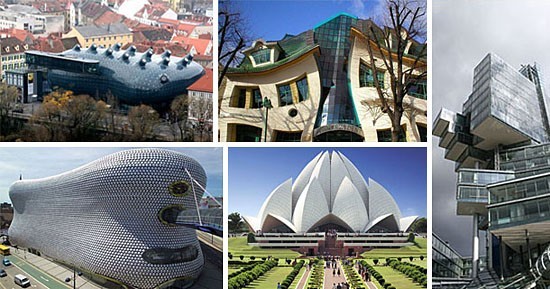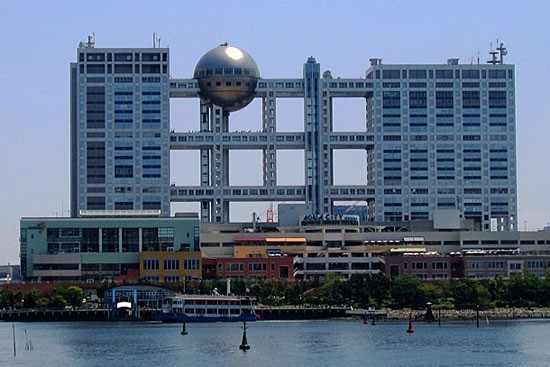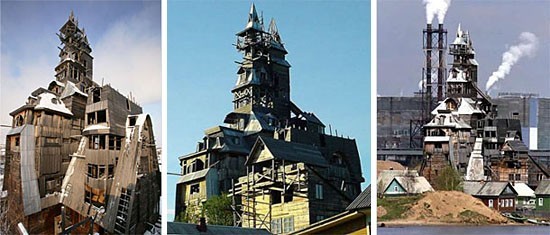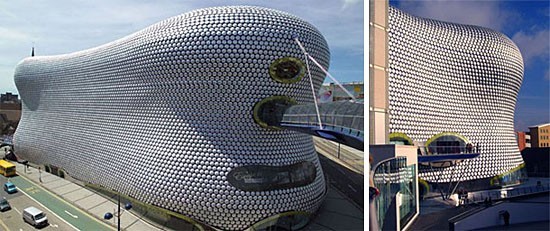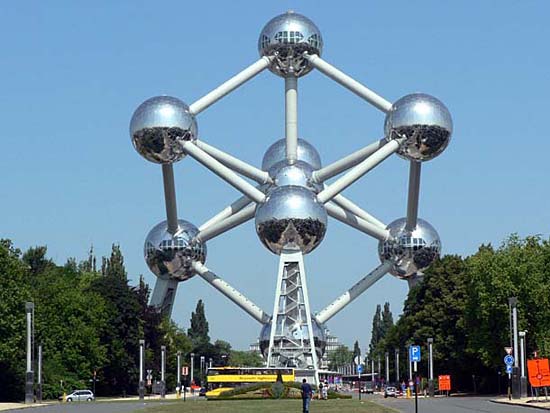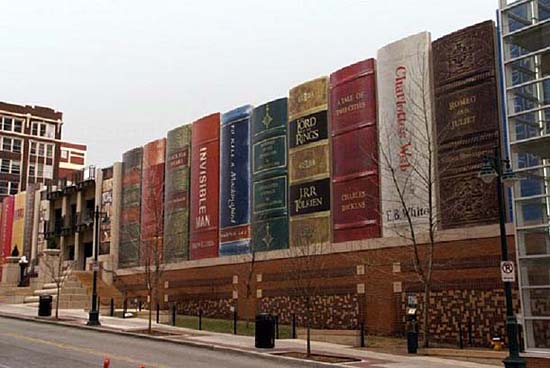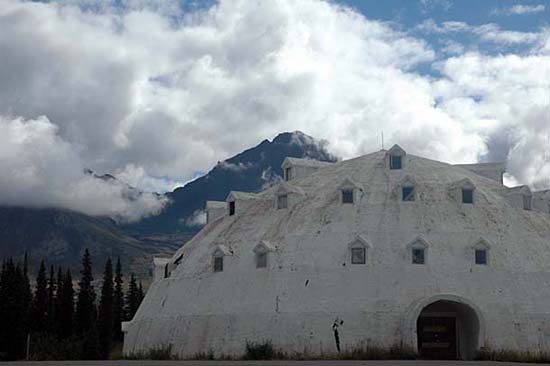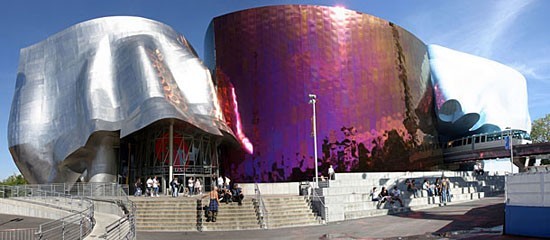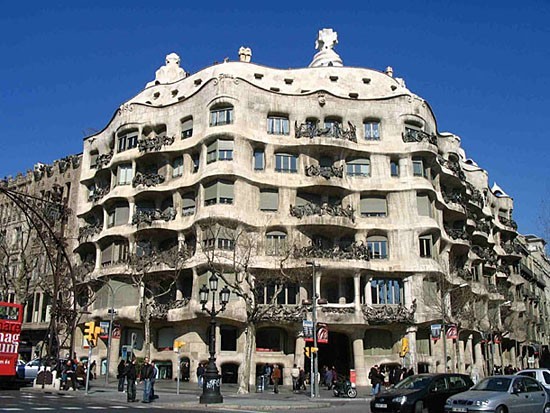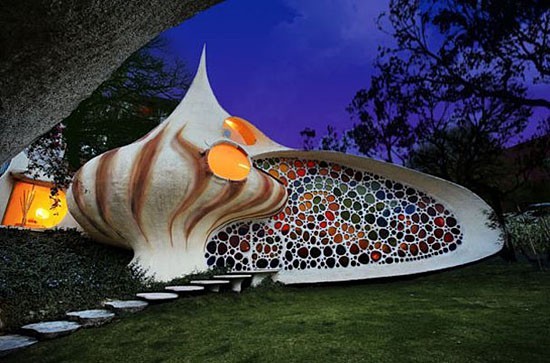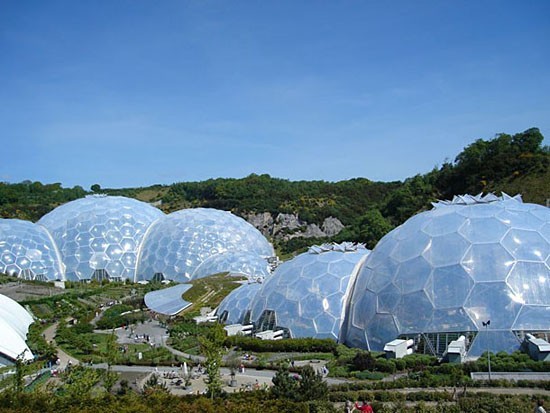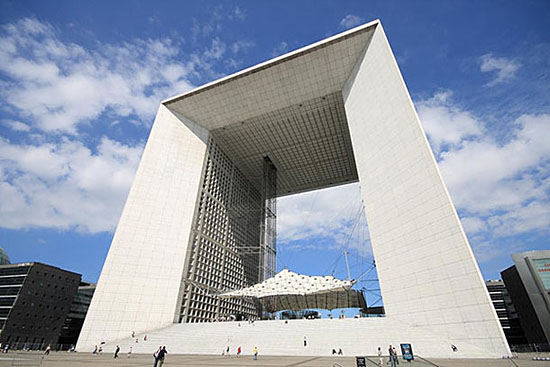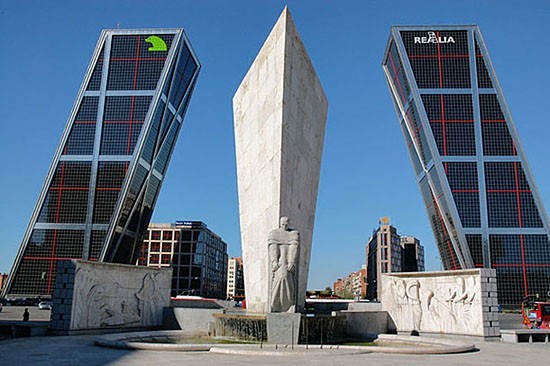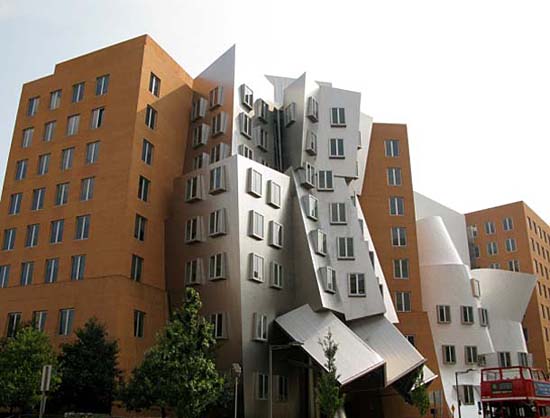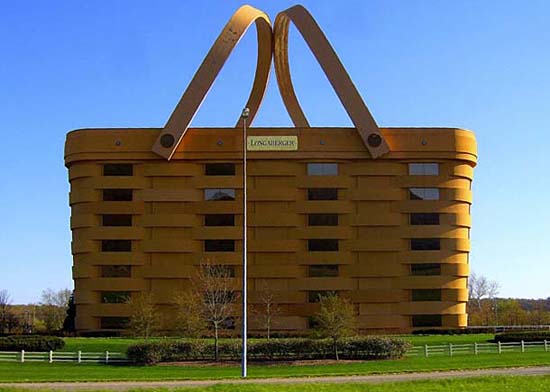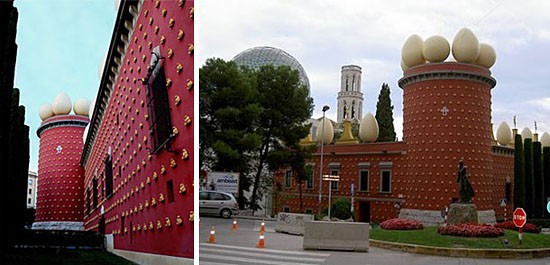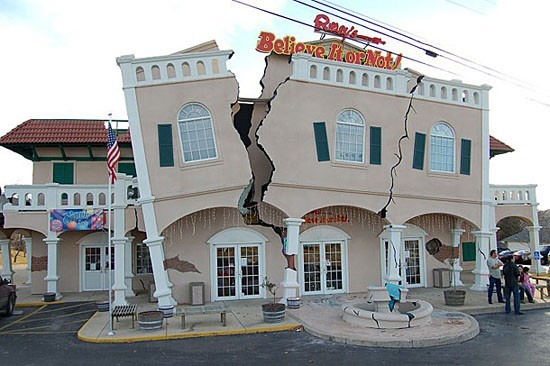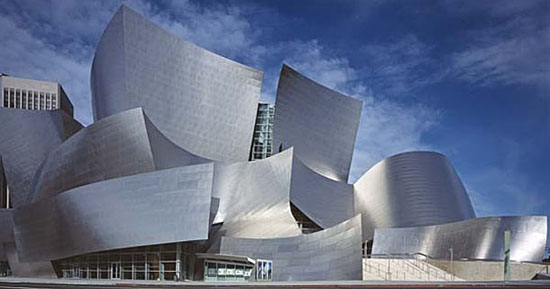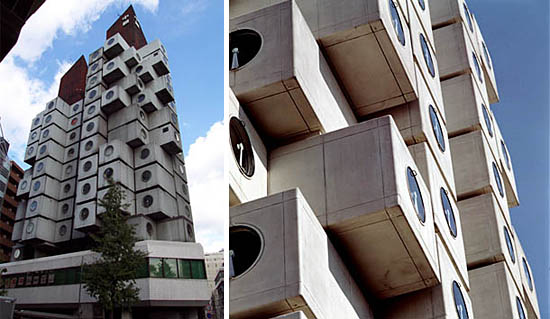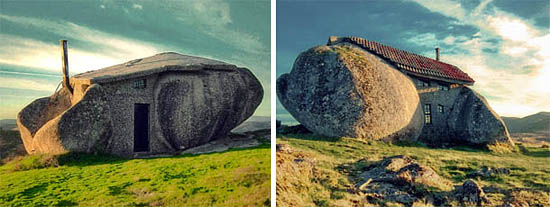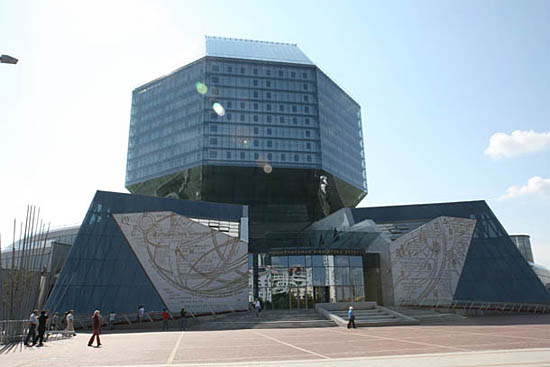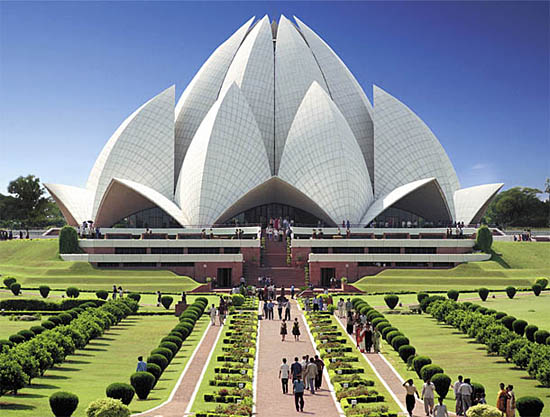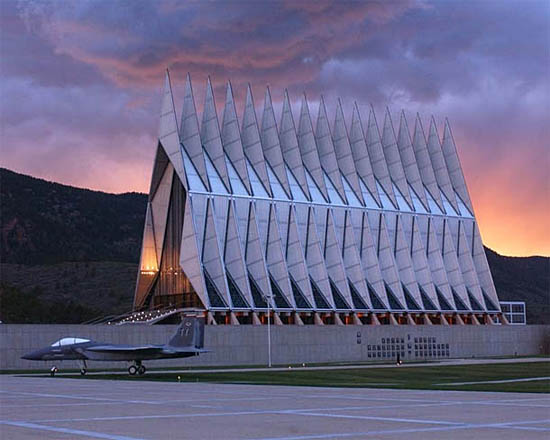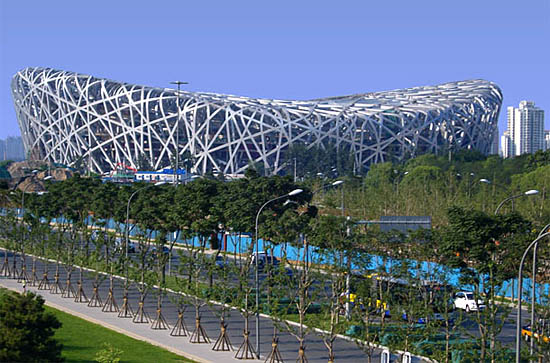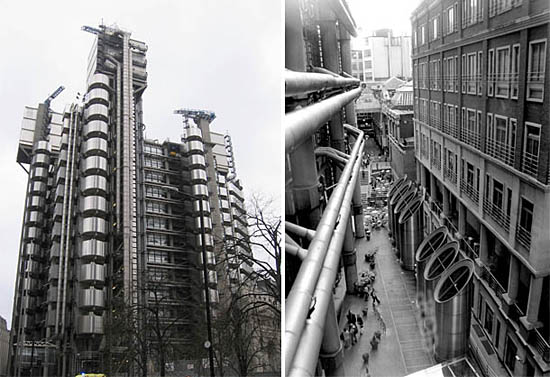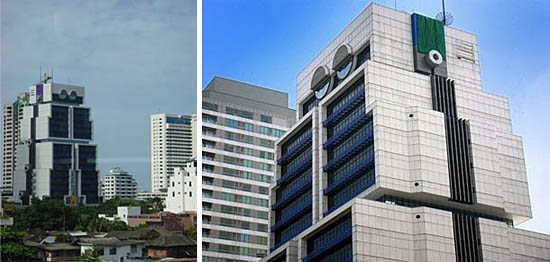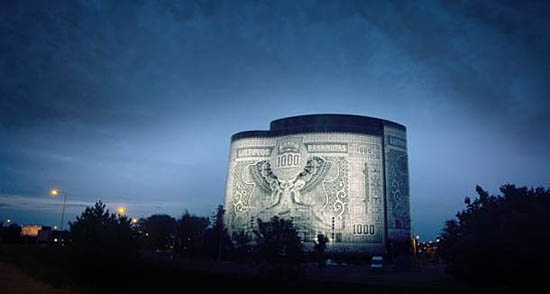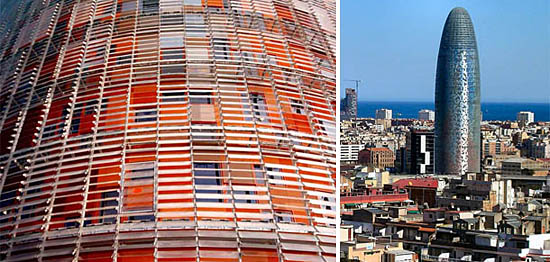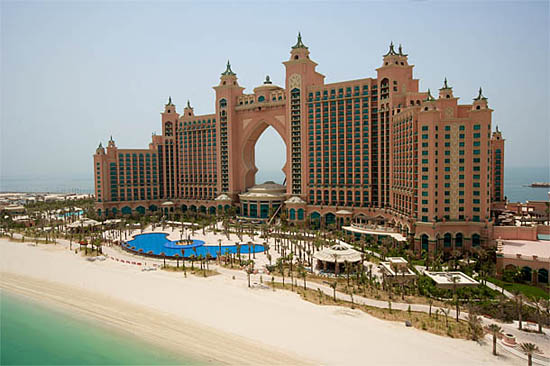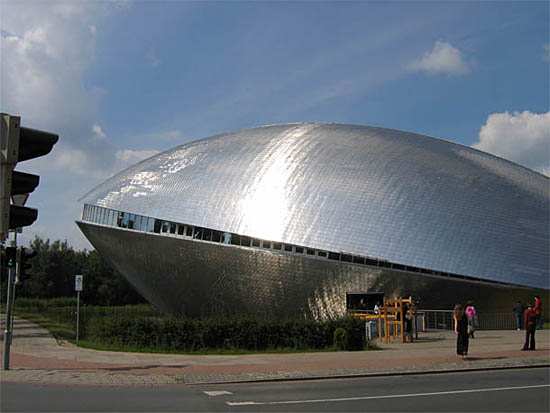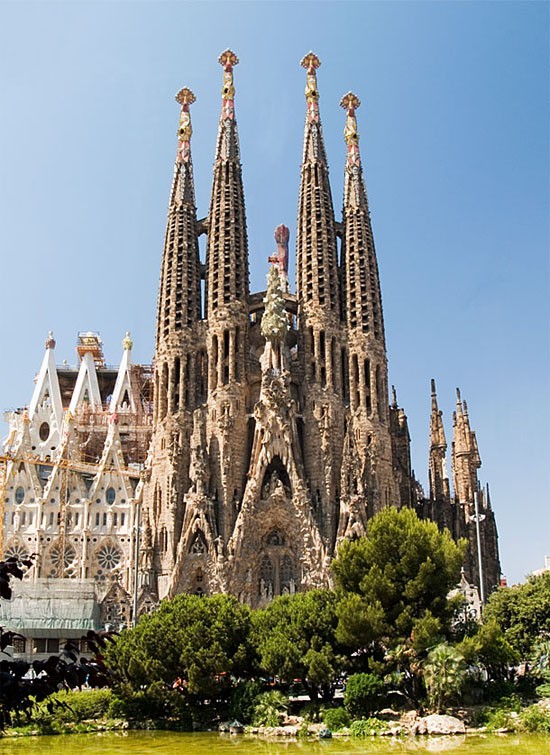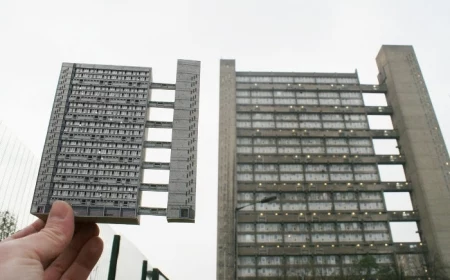Strangest buildings in the world (with info)
We’ve collected some photos (with information) of some of the strangest buildings in the world. Now it’s time to share the “DOs and DON’Ts” in architecture.
Edificio Mirador in Madrid, Spain
Developed by MVRDV. The building reaches 63.4 meters in height with 21 stories. The highlight of this building is the large central hole which is 40 meters above the ground which is a large lookout area that provides inhabitants with a community garden and a space from where they can contemplate the skyline.Different colors represent different blocks with its own planning, which offer at least 9 different types of apartments.
Habitat 67 in Montreal, Canada
The Habitat 67 housing was one of the main themes of Expo 67. Habitat 67 then became a thematic pavilion visited by thousands of visitors who came from around the world. During Expo 67 it was also the temporary residence of the many dignitaries coming to Montreal.
It was designed to integrate the variety and diversity of scattered private homes with the economics and density of a modern apartment building. Modular, interlocking concrete forms define the space. The project was designed to create affordable housing with close but private quarters, each equipped with a garden. The building was believed to illustrate the new lifestyle people would live in increasingly crowded cities around the world. The complex was originally meant to be vastly larger. Due to its architectural cachet, demand for the building’s units have made them more expensive than originally envisioned.
Kunsthaus in Graz, Austria
Its unusual form differs radically from conventional exhibition contexts, many of which maintain the traditions of the modernist “White Cube”. The team of architects used an innovative stylistic idiom, known as blob architecture within the historical ambiance of the Murvorstadt. Thus, the gigantic building affectionately called the “Friendly Alien” by its creators Peter Cook and Colin Fournier, in form and material, stands out consciously against the surrounding baroque roof landscape with its red clay roofing tiles but nevertheless integrates the façade of the 1847 iron house.
Fuji television building in Tokyo, Japan
Next to the media tower is a spherical observation platform, which was built on the roof of the 7th floor and then raised to the 25th floor with a hydraulic jack.
Druzhba Holiday Center Hall in Yalta, Ukraine
This resort building was created by architect Igor Vasilevsky in 1984. It has cylindrical form stands on a hill overlooking a beach in what was then an exclusive resort town. To enter, visitors cross a bridge encased in a glass tube and then descend into the complex, which is supported on massive legs housing the elevators and stairs.
The Wooden skyscraper House in Archangelsk, Russia
This imposing building is believed to be the world’s tallest wooden house rising 13 floors to reach 44 meters. The house is also crumbling, incomplete and under threat of demolition from city authorities who are eager to end Nikolai Sutyagin’s 15 year project. Driven to inspiration by his formative years spent in a Soviet communal flat, Sutyagin felt lonely living by himself.
Selfridges Department Store in Birmingham, The United Kingdom
The department store is created by architects Future systems and since its creation the city of Birmingham has acquired a new emblem: a large, fascinating built sculpture that defies all sense of scale. The curved facade, constructed with sprayed concrete and painted luminous blue, was realized within the limits of the investors’ budget. Drawn over this is a seemingly floating outer skin of polished aluminium discs.
Wonderworks in Pigeon Forge, TN, USA
Wonder Works is an amusement park for the mind featuring over 150 interactive exhibits on 55,000 square feet (5110 square meters).
Atomium in Brussels, Belgium
The Atomium is a monument built for Expo ’58, the 1958 Brussels World’s Fair. Designed by André Waterkeyn, it is 102-meters (335 ft) tall, with nine steel spheres connected so that the whole forms the shape of a unit cell of an iron crystal magnified 165 billion times.
Tubes which connect the spheres along the 12 edges of the cube and all eight vertices to the centre enclose escalators connecting the spheres which contain exhibit halls and other public spaces. The top sphere provides a panoramic view of Brussels. Each sphere is 18 metres in diameter. Three spheres are currently (2008) closed to visitors, others are easily reachable with escalator. The vertical vertex contains a lift which was considered very fast and advanced at the time of building (the speed is 5 m/s)
Forest Spiral – Hundertwasser Building in Darmstadt, Germany
The Hundertwasser house “Waldspirale” (”Forest Spiral”) was built in Darmstadt between 1998 and 2000. Friedensreich Hundertwasser, the famous Austrian architect and painter, is widely renowned for his revolutionary, colourful architectural designs which incorporate irregular, organic forms, e.g. onion-shaped domes.
The structure with 105 apartments wraps around a landscaped courtyard with a running stream. Up in the turret at the southeast corner, there is a restaurant, including a cocktail bar.
Kansas City Public Library in Missouri, USA
This project, located in the heart of Kansas City, represents one of the pioneer projects behind the revitalization of downtown.
The people of Kansas City were asked to help pick highly influential books that represent Kansas City. Those titles were included as ‘bookbindings’ in the innovative design of the parking garage exterior, to inspire people to utilize the downtown Central Library.
Igloo City in Alaska, USA
The 4-story igloo that is supposed to eventually be a motel is now abandoned. Sadly there is not much information about it.
Nord LB building in Hannover, Germany
The building was designed to house the company’s 1,500 Hanover staff in a comfortable and eco-friendly environment, reducing carbon dioxide emissions and optimising the use of natural daylight. Highlights include a staff restaurant with a roof in the shape of butterfly wings and a 20m tower made from material that changes colour according to the position of the sun. The architect’s goal was in their own words to create a transition zone between the 19th century residential area to the south and the historical area directly to the north. How a modern structure like this can achieve such a lofty goal is impossible to say, but the building is certainly eye-catching and a welcome addition to the city’s skyline.
Blur Building at Lake Neuchatel in Yverdon-les-Bains, Switzerland
The Blur Building by is a media pavilion for Swiss Expo 2002 now under construction at the base of Lake Neuchatel. The pavilion is made of filtered lake water shot as a fine mist through 13,000 fog nozzles creating an artificial cloud that measures 300 feet wide by 200 feet deep by 65 feet high. A built-in weather station controls fog output in response to shifting climatic conditions such as temperature, humidity, wind direction, and wind speed. The public can approach Blur via a ramped bridge. The 400 foot long ramp deposits visitors at the center of the fog mass onto a large open-air platform where movement is unregulated. Visual and acoustical references are erased along the journey toward the fog leaving only an optical “white-out” and the “white-noise” of pulsing water nozzles.
Experience Music Project in Seattle, WA, USA
The Experience Music Project and Science Fiction Museum and Hall of Fame (abbreviation rendered with a pipe as EMP|SFM) is a museum dedicated to the history and exploration of both popular music and science fiction located in Seattle, Washington. The Frank Gehry-designed museum building is located on the campus of the Seattle Center, adjacent to the Space Needle and the Seattle Center Monorail, which runs through the building. This building is a museum that has sci-fi and music mixed together.
La Pedrera in Barcelona, Spain
Casa Milà, better known as La Pedrera (Catalan for ‘The Quarry’), is a building designed by the Catalan architect Antoni Gaudí and built during the years 1905–1910, being considered officially completed in 1912.
The Nautilus House in Mexico City, Mexico
The clients, a young couple with two children who after living in a conventional home wanted to change to one integrated to nature. Read the rest and view more photos here.
Cubic Houses in Rotterdam, Netherlands
Kubuswoningen, or cube houses, are a set of innovative houses built in Rotterdam and Helmond in The Netherlands, designed by architect Piet Blom in 1984. The houses in Rotterdam are located on Overblaak Street, and beside the Blaak Subway Station. Blom tilted the cube of a conventional house 45 degrees, and rested it upon a hexagon-shaped pylon. There are 38 small cubes and two so called ‘super-cubes’, all attached to each other.
Eden project in The United Kingdom
The Eden Project is a visitor attraction in the United Kingdom, including the world’s largest greenhouse. Inside the artificial biodomes are plants that are collected from all around the world. The project is located in a reclaimed Kaolinite pit, located 2 kilometers (1.25 miles) from the town of St Blazey and 5 kilometres (3 miles) from the larger town of St Austell, Cornwall.
BMW Welt in Munich, Germany
BMW Welt (English – BMW World), is a multi-functional customer experience and exhibition facility of the BMW AG, located in Munich, Germany. In direct proximity to the BMW Headquarters and the Olympiapark, it is designed to present the current products of BMW, be a distribution center for BMW cars, and offer an event forum and a conference center.
La Grande Arche de la Défense in Paris, France
A great national design competition was launched in 1982 as the initiative of French president François Mitterrand. Danish architect Johann Otto von Spreckelsen (1929–1987) and Danish engineer Erik Reitzel designed the winning entry to be a 20th century version of the Arc de Triomphe: a monument to humanity and humanitarian ideals rather than military victories. The construction of the monument began in 1985. Spreckelsen resigned on July 1986 and ratified the transfer of all his architectural responsibilities to his associate, French architect Paul Andreu. Reitzel continued his work until the monument was completed in 1989.
The Arche is almost a perfect cube (width: 108m, height: 110m, depth: 112m); it has been suggested that the structure looks like a four-dimensional hypercube (a tesseract) projected onto the three-dimensional world. It has a prestressed concrete frame covered with glass and Carrara marble from Italy and was built by the French civil engineering company Bouygues.
Puerta de Europa / Torres KIO in Madrid, Spain
Created back in 1996 by Philip Johnson and John Burgee, Torres KIO are two twin office buildings in Madrid. Each building is 115 m tall with an inclination of 15º. These twin towers are the world’s first leaning high-rise buildings.
Turning Torso in Malmö, Sweden
Created by Santiago Calatrava, the tower is inspired by a painting called “Turning torso”. It reaches a height of 190 metres (623 feet) with 54 stories and uses nine segments of five-story pentagons that twist as it rises. The topmost segment is twisted ninety degrees clockwise with respect to the ground floor.
Stata Center in Cambridge, Massachusetts, USA
The Ray and Maria Stata Center or Building 32 is a 720,000 square foot (67,000 square meters) academic complex designed by Pritzker Prize-winning architect Frank Gehry for the Massachusetts Institute of Technology (MIT). The building opened for initial occupancy on March 16, 2004. It sits on the site of MIT’s former Building 20, which housed the historic Radiation Laboratory, in Cambridge, Massachusetts.
The Basket Building in Ohio, USA
The Longaberger Basket Company building in Newark is 180,000-square-foot building (16 720 square meters), a replica of the company’s famous market basket, cost $30 million and took two years to complete. Many experts tried to persuade Dave Longaberger to alter his plans, but he wanted an exact replica of the real thing.
The Torre Galatea in Figueras, Spain
The building is named after Dalí’s wife and muse Gala. It is an annex of the Salvador Dalí Theater/Museum.
Ripley’s Building in Niagara Falls, Ontario, Canada
The building was built to reflect the odd 1812 earthquake that measured 8.0 on the rick. The building has now become one of the most photographed in the world because of it.
The Crooked House in Sopot, Poland
The Krzywy Domek (Crooked House) was built in 2004. It is approximately 4,000 square meters in size and is part of the Rezydent shopping center. It was designed by Szotynscy Zaleski who was inspired by the fairytale illustrations and drawings of Jan Marcin Szancer and Per Dahlberg.
Walt Disney Concert Hall in Los Angeles, California, USA
Walt Disney Concert Hall is designed to be one of the most acoustically sophisticated concert halls in the world providing an unparalleled musical experience. The project was launched in 1987 and completed in 2003.
Chapel in the Rock in Arizona, USA
The Chapel of the Holy Cross is an iconic Catholic chapel built into the mesas of Sedona, Arizona, which was inspired and commissioned by sculptor Marguerite Brunswig Staude, student of Frank Lloyd Wright. Richard Hein was chosen as project architect, and the design was executed by architect August K. Strotz, both from the firm of Anshen & Allen. The chapel is built on Coconino National Forest land; the late Senator Barry Goldwater assisted Staude in obtaining a Special Use permit. The construction supervisor was Fred Courkos, who built the chapel in 18 months at a cost of US$300,000. The chapel was completed in 1956.
Dancing Building in Prague, Czech Republic
The Dancing House (Czech: Tančící dům) is the nickname given to the Nationale-Nederlanden building in downtown Prague, Czech Republic. It was designed by Croatian-Czech architect Vlado Milunić in co-operation with Canadian architect Frank Gehry on a vacant riverfront plot (where the previous building had been destroyed during the Bombing of Prague in 1945). The building was designed in 1992 and completed in 1996.
Nakagin Capsule Tower in Tokyo, Japan
The Nakagin Capsule Tower is a mixed-use residential and office tower designed by architect Kisho Kurokawa and located in Shimbashi, Tokyo, Japan.
Completed in 1972, the building is a rare built example of Japanese Metabolism, a movement that became emblematic of Japan’s postwar cultural resurgence. The building was the world’s first example of capsule architecture built for actual use. The building is still in use as of 2010, but has fallen into disrepair.
The building is actually composed of two interconnected concrete towers, respectively eleven and thirteen floors, which house 140 prefabricated modules (or “capsules”) which are each self-contained units. Each capsule measures 2.3 m (8 ft) × 3.8 m (12 ft) × 2.1 m (7 ft) and functions as a small living or office space. Capsules can be connected and combined to create larger spaces. Each capsule is connected to one of the two main shafts only by four high-tension bolts and is designed to be replaceable. No units have been replaced since the original construction.
Stone House in Fafe, Portugal
The house is located in the mauntains of Fafe and there is very little further information. Nevertheless the house looks odd and deserves a place on the list.
The Ufo House in Sanjhih, Taiwan
The building is an abandoned resort project, but is referred to by Taiwanese locals as the UFO house because of it’s somewhat extra-terrestrial design.
The Ryugyong Hotel in Pyongyang, North Korea
The Ryugyong Hotel is a 105-floor, 330 meters high (1,080 ft), containing 360,000 square meters (3,900,000 sq ft) of floor space skyscraper under construction in Pyongyang, North Korea. Its name comes from one of the historic names for the city of Pyongyang, and means “capital of willows”.
The building is also known as the 105 building, a reference to its number of floors. Construction began in 1987, but was halted in 1992 due to the economic disruptions that afflicted the country. The hotel stood topped out but without windows or interior fittings for the next sixteen years, until construction resumed in April 2008, under the supervision of the Orascom Group of Egypt, which has invested heavily in the North Korean mobile telephony and construction industries.
The National Library in Minsk, Belarus
The building has 22 floors and was completed in January 2006. The building can seat about 2,000 readers and features a 500-seat conference hall. Its main architectural component has the shape of a rhombicuboctahedron. The library’s new building was designed by architects Mihail Vinogradov and Viktor Kramarenko and opened on 16 June 2006.
The Lotus Temple in Delhi, India
The Bahá’í House of Worship in Delhi, India, popularly known as the Lotus Temple due to its flowerlike shape, is a Bahá’í House of Worship and also a prominent attraction in Delhi.
Inspired by the lotus flower, its design is composed of 27 free-standing marble clad “petals” arranged in clusters of three to form nine sides. While all current Bahá’í Houses of Worship have a dome, they are not regarded as an essential part of their architecture. Bahá’í scripture also states that no pictures, statues or images be displayed within the House of Worship and no pulpits or altars be incorporated as an architectural feature (readers may stand behind simple portable lecture stands). The nine doors of the Lotus Temple open onto a central hall, capable of holding up to 2,500 people. The central hall is slightly more than 40 meters tall and its surface is made of white marble.
The Air Force Academy Chapel in Colorado, USA
The most striking aspect of the Chapel is its row of seventeen spires. The original design called for nineteen spires, but this number was reduced due to budget issues. The structure is a tubular steel frame of 100 identical tetrahedrons, each 75 feet (23 meters) long, weighing five tons, and enclosed with clear aluminum panels. The panels were fabricated in Missouri and shipped by rail to the site. The tetrahedrons are spaced a foot apart, creating gaps in the framework that are filled with one-inch thick colored glass. The tetrahedrons comprising the spires are filled by triangular clear aluminum panels, while the tetrahedrons between the spires are filled with a mosaic of colored glass in aluminum frame.
The Cadet Chapel itself is 150 feet (46 meters) high, 280 feet (85 meters) long, and 84 feet (26 meters) wide. The front façade, on the south, has a wide granite stairway with steel railings capped by aluminum handrails leading up one story to a landing. At the landing is a band of gold anodized aluminum doors, and gold anodized aluminum sheets apparently covering original windows.
Beijing National Stadium in Beijing, China
Located in the Olympic Green, the stadium cost US $423 million. The design was awarded to a submission from the Swiss architecture firm Herzog & de Meuron in April 2003, after a bidding process that included 13 final submissions. The design, which originated from the study of Chinese ceramics, implemented steel beams in order to hide supports for the retractable roof; giving the stadium the appearance of a “Bird’s nest”. Leading Chinese artist Ai Weiwei was the artistic consultant on the project. The retractable roof was later removed from the design after inspiring the stadium’s most recognizable aspect. Ground was broken in December 2003 and the stadium officially opened in June 2008. A shopping mall and a hotel are planned to be constructed to increase use of the stadium, which has had trouble attracting events, football and otherwise, after the Olympics.
Lloyd’s building in London, The United Kingdom
The Lloyd’s building (also sometimes known as The Inside-Out Building) is the home of the insurance institution Lloyd’s of London. It was designed by architect Richard Rogers and built between 1978 and 1986. Bovis was the management contractor for the scheme. Like the Pompidou Centre (designed by Renzo Piano and Rogers), the building was innovative in having its services such as staircases, lifts, electrical power conduits and water pipes on the outside, leaving an uncluttered space inside. The twelve glass lifts were the first of their kind in the UK.
The building consists of three main towers and three service towers around a central, rectangular space. Its focal point is the large Underwriting Room on the ground floor, which houses the famous Lutine Bell. The Underwriting Room (often simply known as ‘the Room’) is overlooked by galleries, forming a 60 meters (197 feet) high atrium lit naturally through a huge barrel-vaulted glass roof. The first four galleries open onto the atrium space, and are connected by escalators through the middle of the structure. The higher floors are glassed-in, and can only be reached via the outside lifts.
The 11th floor houses the Committee Room, an 18th century dining-room designed for the 2nd Earl of Shelburne by Robert Adam in 1763: it was transferred piece-by-piece from the previous (1958) Lloyd’s building across the road.
Robot Building in Bangkok, Thailand
The Robot Building, located in the Sathorn business district of Bangkok, Thailand, houses United Overseas Bank’s Bangkok headquarters. It was designed for the Bank of Asia by Sumet Jumsai to reflect the computerization of banking; its architecture is a reaction against neoclassical and high-tech postmodern architecture. The building’s features, such as progressively receding walls, antennas, and eyes, contribute to its robotic appearance and to its practical function. Completed in 1986, the building is one of the last examples of modern architecture in Bangkok.
Office center “1000″ / Banknote (Kaunas, Lithuania)
Office center 1000 is 10-floor office building designed in the form of a LTL 1,000 banknote, Office Center 1000 is being touted locally as one of the Baltic region’s most daring and original construction projects. The image of the LTL 1000 banknote is brought onto this 10-story building using special enamel paint. During the process the paint turns into a ceramic print that lasts forever.
Great Mosque of Djenné in Djenne, Mali
The Great Mosque of Djenné is the largest mud brick or adobe building in the world and is considered by many architects to be the greatest achievement of the Sudano-Sahelian architectural style, albeit with definite Islamic influences. The mosque is located in the city of Djenné, Mali on the flood plain of the Bani River. The first mosque on the site was built around the 13th century, but the current structure dates from 1907. As well as being the centre of the community of Djenné, it is one of the most famous landmarks in Africa. Along with the “Old Towns of Djenné” it was designated a World Heritage Site by UNESCO in 1988.
The Agbar Tower in Barcelona, Spain
The Torre Agbar, or Agbar Tower, is a 38-story tower located between Diagonal and Calle Badajoz, near Plaça de les Glòries Catalanes, which marks the gateway to the new technological district of Barcelona, Catalonia, Spain. It was designed by French architect Jean Nouvel in association with the Spanish firm B720 Arquitectos and built by Dragados. The Torre Agbar is located in the Poblenou neighborhood of Barcelona and is named after its owners, the Agbar Group, a holding company whose interests include the Barcelona water company Aigües de Barcelona.
Atlantis in Dubai, UAE
Atlantis, the Palm is a resort at Palm Jumeirah in Dubai, United Arab Emirates which opened on on 24 September 2008. The resort is modelled after the Atlantis, Paradise Island resort in Nassau, Bahamas. The resort consists of two towers linked by a bridge, with a total of 1539 rooms. There are two monorail stations connecting the resort to the main section of the Palm Jumeirah islands.
Universum Science Center in Bremen, Germany
The Universum Bremen opened in September 2000 near to the University of Bremen, Germany. Covering over 4,000 square meters the exhibition contains exhibits related to one of the three topics: mankind, earth and the cosmos. The science center building, with its 40,000 stainless steel scales, resembles a mixture between a whale and mussel. It was designed by the Bremen architect Thomas Klumpp.
The Piano Building in Huainan, China
The building is primarily used to display models of the city new development projects. Sadly If someone could find anymore information, it would be greatly appreciated.
La Sagrada Familia in Barcelona, Spain
The Temple Expiatori de la Sagrada Família (official Catalan name; Spanish: Templo Expiatorio de la Sagrada Familia; “Expiatory Church of the Holy Family”), often simply called the Sagrada Família, is a massive, privately-funded Roman Catholic church that has been under construction in Barcelona, Spain since 1882 and is not expected to be complete until at least 2026. A portion of the building’s interior is scheduled to open for public worship and tours by September 2010.
Considered the master-work of renowned Catalan architect Antoni Gaudí (1852–1926), the project’s vast scale and idiosyncratic design have made it one of Barcelona’s (and Spain’s) top tourist attractions for many years. The church is to be consecrated by Pope Benedict XVI on November 7, 2010.
Reversible Destiny Lofts in Mitaka, Japan
The designers of “The Reversible Destiny Lofts” believe people should be in an environment that “stimulates their senses and invigorates their lives.” They stress “particularly older people shouldn’t sit back, which makes them decline. They should live in an environment that can boost immunity and increase longevity.” In fact the house looks quite restless, with a dizzying array of colors, uneven floors, inconvenient placement of furniture, irregularly shaped walls, a transparent bathroom wall and more.
Olympic Stadium in Montreal, Canada
The Olympic Stadium (French: Stade olympique) is a multi-purpose stadium in the Hochelaga-Maisonneuve district of Montreal, Quebec, Canada built as the main venue for the 1976 Summer Olympics. It subsequently became the home of Montreal’s professional baseball and Canadian football teams. Since 2004, when the Montreal Expos relocated to Washington, D.C., the stadium has no main tenant, and with a history of financial and structural problems, is largely seen as a white elephant. It currently serves as a 56,040-seat multipurpose facility for special events (e.g. concerts, trade shows) during non-winter months, and continues to serve as a 66,308-seat venue for playoff and Grey Cup games hosted by the Montreal Alouettes. La tour de Montréal, the tower incorporated into the base of the stadium, is the tallest inclined tower in the world at 175 metres, and is a member of the World Federation of Great Towers. The stadium’s nickname The Big O is a reference to both its name and to the doughnut-shape of the permanent component of the stadium’s roof, though The Big Owe has been used to reference the astronomical cost of the stadium and the 1976 Olympics as a whole.

Maria Konou is a specialist in the field of digital marketing and fashion. However, she has always had a way with words. That’s what led her to her dream job here at Archzine. She has worked in many different fields over the years, but according to her, being an author has been the most rewarding. Maria is a huge plant enthusiast, loves everything fashion-related, is very sustainably aware, and is always open to learning about new things.
